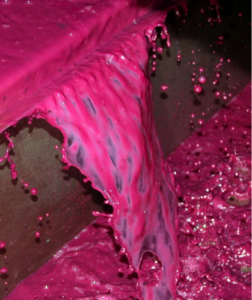
Nick Adams, MW
With summer fast approaching, crisp and fruity rosé wines come more to mind and we have some exciting new offerings from Wine Trust 100 in the pipeline. But this set me thinking: what is, and makes, a rosé wine?
As you can see from the bird’s eye picture below the description “rosé” is itself a general term – just look at the variation in colours in these eight wines – all of them rosé! This gets right to the heart of the matter, as to make a rosé you have to start out as if you were making a red wine.
When you squeeze a wine grape the juice that runs out is water white in colour – whether the grape you use is black or white. This is because the entire colour is contained in the skins of (black) grapes. Therefore if you want to make a red wine you have to keep the juice and skins in contact with each other. In a simple analogy, it is like making a giant pot of tea where contact between the water and tea leaves produces both the flavour and colour of the beverage.
And the longer you leave the skins in contact the darker the colour becomes. To put this into context, as little as 12 hours will see a “staining” in the wine – after 36 hours – a genuine rosé hue will be achieved – see picture below (if you wanted to make a deep, dark red the contact period can easily be 2 weeks or longer). And then there is the effect of the grape variety itself.
Certain varieties, such as Cabernet Sauvignon and Syrah/Shiraz have much deeper colour pigments in their skins than say Pinot Noir and Grenache. Therefore Cabernet skins left in contact with their juice for 36 hours will produce, on average, a deeper colour than say Grenache over the same period.
 So the winemaker will judge the moment when they are happy with the depth and hue of the (rosé) colour; at which point they draw off the juice and separate the skins,which no longer are needed. They then finish the fermenting process as though the wine were a white.
So the winemaker will judge the moment when they are happy with the depth and hue of the (rosé) colour; at which point they draw off the juice and separate the skins,which no longer are needed. They then finish the fermenting process as though the wine were a white.
The other benefit of this short skin contact period is that it should help to highlight the fruity flavours and aroma of the wine. In the vast majority of cases rosés are bottled unoaked, leaving their bright fruity character “unplugged” so to speak.
These days rosés are drunk all the year round, but it is inevitable that sales peak in the hot summer months. They are also a great style for drinking on their own, or with the more naturally lighter and fresher foods of the summer months.
Either way rosés should be celebrated for their unbridled, uncomplicated and above all refreshing style. I will certainly drink to that!
NA 2014 04

